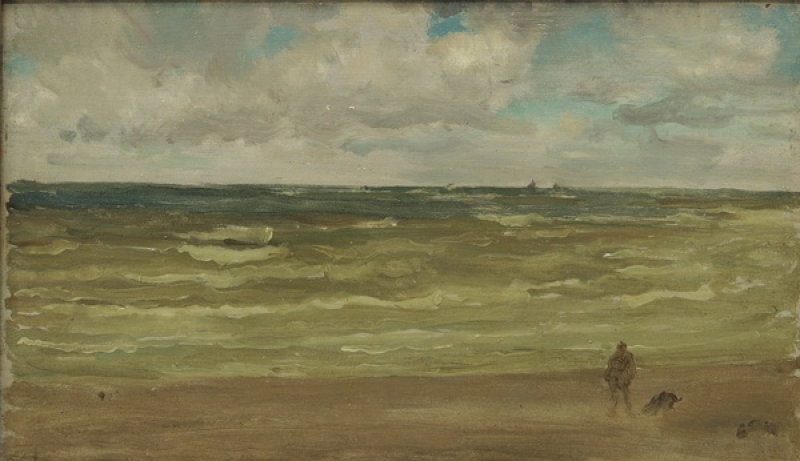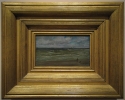Technique
The panel was prepared with a grey ground. It is painted very freely, the breaking waves in particular being of the consistency of thick cream, applied with a loaded brush. It is possible a ruled line was drawn along the horizon. Some brushstrokes near the horizon stretch right across the panel from left to right. The beach is painted much more thinly and smoothly.
It is similar in style to other Pourville seascapes, such as Blue and Silver: Boat Entering Pourville [YMSM 524] and The Sea, Pourville, No. 1 [YMSM 516].
Curry, comparing it with the much earlier (and larger) Harmony in Blue and Silver: Trouville [YMSM 064], commented: 'While the surface of the earlier painting is a series of thinly applied paint films, High Tide is made up of ribbons of buttery soft green, gray, and blue pigments, a palette typical of the Pourville works.' 1
Conservation History
The panel is chamfered at each end, and cradled.
Frame
Grau-style frame, dating from the early 20th century. 2
Last updated: 13th November 2020 by Margaret








